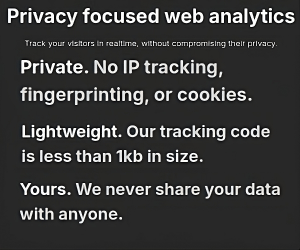The Deep Web of the 90s: Forerunners of the Tor Network and Early Anonymous Markets
All About The Deep Web of the 90s and Early Anonymous Markets
The 1990s were a pivotal time for the internet. As connectivity expanded across the globe, early pioneers sought ways to enhance online privacy and anonymity, leading to the development of what we now refer to as the deep web. This hidden part of the internet allowed users to access content and communicate beyond the public web, and it laid the foundation for what would later become the Tor network. The rise of early anonymous networks also gave birth to the precursors of today’s dark web markets.
In this article, we will explore these early deep web networks, how they operated, the extent of their security and functionality, and how they facilitated anonymous transactions, including illegal activities. While this is not a critique of those activities, it serves to provide an in-depth, technical overview of how the deep web evolved.
The Foundations of the Deep Web in the 90s
The idea of a decentralized and anonymous internet had existed for decades before the 90s, but it was in this decade that significant advancements took place. The internet was growing exponentially, and with that growth came concerns about privacy, censorship, and surveillance. Users began seeking ways to communicate securely and anonymously, leading to the creation of several early networks that would eventually inspire the modern Tor network.
Freenet: The Beginning of Anonymous Peer-to-Peer Networking
One of the earliest and most notable deep web networks was Freenet, developed in 1999 by Ian Clarke. While Freenet came to fruition at the end of the 90s, its foundational ideas emerged earlier, during a time when online freedom and privacy were hot topics. Freenet was designed to allow users to publish and access information anonymously, without fear of censorship or government intervention.
How Freenet Worked
Freenet used a peer-to-peer (P2P) network architecture, where users contributed storage space on their own devices to host encrypted pieces of data. This meant that there were no central servers—data was distributed across the network, making it extremely difficult to trace the origin of the content.
When a user requested a piece of information, Freenet would search the network for it and retrieve it without revealing the identity of the requester. Files on Freenet were divided into smaller chunks, encrypted, and distributed across different nodes. Only the user with the appropriate decryption key could reassemble and access the original file. This setup ensured that even the hosts of the data did not know what content they were storing.
Freenet allowed the creation of anonymous websites, often referred to as “freesites,” and users could share a variety of content, from political critiques to more controversial or illegal materials, such as pirated software. This decentralized, anonymous sharing made Freenet a key player in the early deep web landscape.
I2P: Enhancing Anonymity and Private Communication
Another critical network that emerged in the late 90s was I2P (Invisible Internet Project). While it gained greater recognition in the 2000s, its conceptual development started in the 90s. I2P aimed to create a robust and anonymous communication platform, offering more sophisticated anonymity features than what was previously available.
How I2P Worked
I2P used a system of “garlic routing”, which was an evolution of the onion routing technique that would later be adopted by Tor. Garlic routing involves bundling multiple messages together, encrypting them, and sending them through a series of intermediate nodes. Unlike traditional onion routing, which only hides the content of the message, garlic routing also obscures the metadata, such as the number of messages being sent and their destinations.
I2P allowed for the creation of anonymous websites called “eepsites,” which could only be accessed within the I2P network. The network also supported anonymous email services, file sharing, and even chat services, making it a versatile platform for users seeking privacy.
Much like Freenet, I2P also had its share of controversial content. Although its primary use was for secure communication and file sharing, I2P gradually became a haven for more illicit activities, including the sharing of illegal materials.
Was the Deep Web in the 90s Safe and Functional?
The deep web networks of the 90s were innovative, but they were far from perfect. Freenet and I2P both offered significant improvements in privacy and anonymity over the regular internet, but they had their technical limitations.
Security Concerns
While these networks employed encryption and decentralized hosting, they were still vulnerable to certain types of attacks. Traffic analysis was one of the primary threats. While the content of communications was encrypted, the fact that data was being transmitted could still be observed. This allowed attackers (or governments) to potentially identify who was communicating with whom, even if they couldn’t see the contents of the messages.
Moreover, early versions of these networks were not immune to data leaks or bugs that could expose a user’s identity. Freenet, for example, was criticized for being slow and occasionally unstable. Users had to rely heavily on encryption keys, and if these were compromised, their identity or the data they were accessing could be revealed.
Functionality
In terms of functionality, both Freenet and I2P were groundbreaking for their time, but they were not without their drawbacks. Freenet’s decentralized system could be slow and inefficient, especially when there were not enough nodes (users) contributing storage and bandwidth to the network. I2P, though more advanced in terms of routing and anonymity, also suffered from speed issues, particularly when multiple users were accessing the network at the same time.
Additionally, the user experience on these networks was often clunky. The software was not user-friendly, and it required a level of technical expertise that limited its broader adoption. Only tech-savvy users could navigate the complexities of setting up and using these deep web networks.
Precursors to Dark Web Markets
As anonymity networks like Freenet and I2P grew, they began to attract users interested in illegal activities, leading to the emergence of early dark web markets. These markets were not as structured or sophisticated as today’s dark web marketplaces, but they provided the first glimpse into how anonymous networks could facilitate illegal transactions.
Early Illegal Markets on the Deep Web
While the deep web of the 90s did not have the well-organized marketplaces that we see today (like Silk Road on the modern dark web), early platforms did exist for exchanging illegal goods. Most of these markets operated in a more ad-hoc manner, relying on forums or private communication channels for buyers and sellers to meet.
One of the key challenges for early deep web markets was the lack of a secure, anonymous form of payment. Cryptocurrencies like Bitcoin, which have become synonymous with dark web transactions today, did not exist in the 90s. Instead, buyers and sellers relied on digital tokens and cash transactions, which were risky and inconvenient. Some markets also used money orders or even barter systems, though these methods were less reliable.
How Transactions Were Carried Out
In the absence of cryptocurrencies, there were digital tokens, but many deep web transactions in the 90s were conducted offline. Buyers would arrange to send cash through the mail, often to a P.O. box or a third-party intermediary. This method was fraught with risks, as there was no way to guarantee that the goods would be delivered or that the seller would honor their end of the deal.
In some cases, users would trade illegal goods directly, bypassing the need for cash. For example, software piracy was rampant on these early networks, and users could exchange pirated software or hacking tools without the need for monetary payment.
Forerunners of the Tor Network
The development of these early deep web networks, while imperfect, laid the groundwork for the creation of Tor (The Onion Router) in the early 2000s. Tor’s onion routing technology was directly inspired by concepts from both Freenet and I2P, but with significant improvements in usability, security, and scalability.
Tor introduced a more sophisticated system for anonymizing internet traffic, making it much harder for third parties to track users’ activities. While Freenet and I2P required specialized software and technical know-how, Tor was designed to be more accessible to everyday users. This accessibility, combined with its robust security protocols, quickly made Tor the go-to platform for anonymous browsing and communication.
Conclusion
The deep web of the 90s was a fascinating and transformative period in internet history. Networks like Freenet and I2P pushed the boundaries of what was possible in terms of privacy and anonymity, even if they were not perfect. While these networks were primarily designed to protect free speech and offer users a way to communicate without censorship, they also became the early breeding grounds for illegal markets and anonymous transactions.
Although the deep web of the 90s was slower, more difficult to use, and less secure than today’s technologies, it laid the foundation for modern anonymous networks like Tor, which have since revolutionized how we think about privacy and security online. The seeds of today’s dark web markets were also planted during this time, as users began experimenting with ways to carry out illegal activities without being detected by authorities.











0 thoughts on “The Deep Web of the 90s: Forerunners of the Tor Network and Early Anonymous Markets”